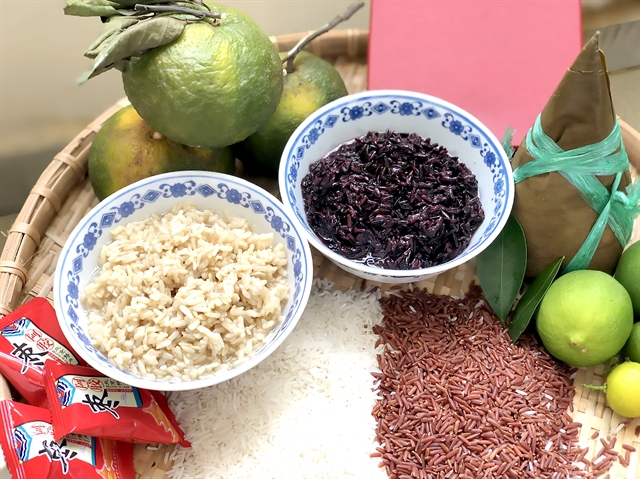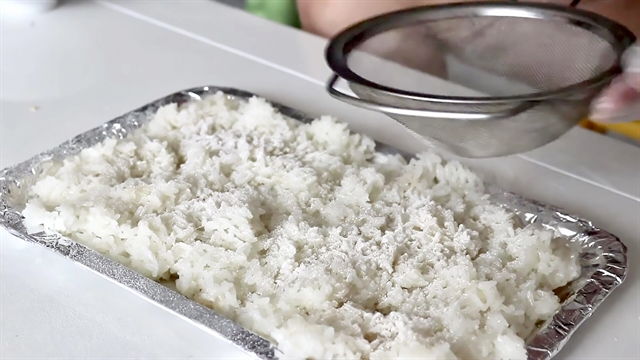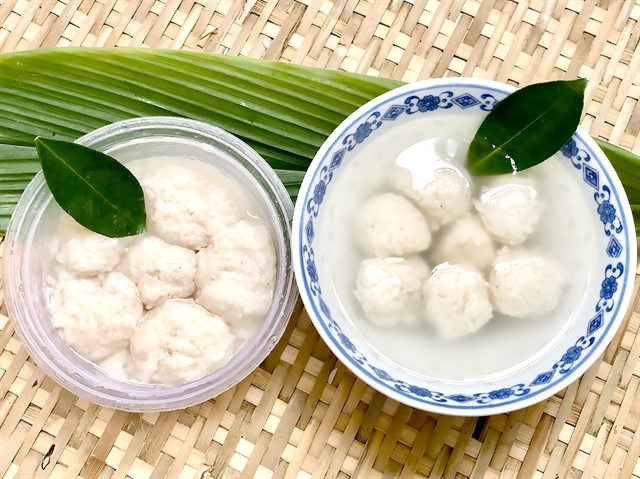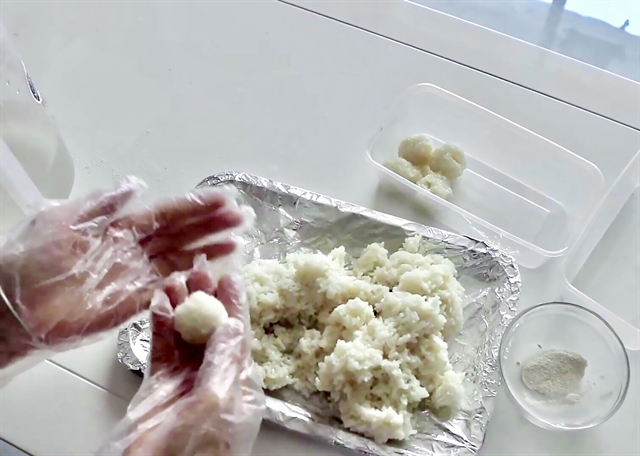 Life & Style
Life & Style

by Gia Linh
Vietnamese people are fond of rice. Dating back hundreds of years, they have been using rice in almost every recipe, be it snacks, entrees, or desserts. Various twists and turns have happened to bring such an ordinary ingredient far beyond its potential, and cơm rượu (a glutinous rice wine dessert) is among the incredible byproducts.
 |
| Northern-style cơm rượu uses either nếp cái hoa vàng or nếp than to create a chewy and slightly crunchy texture. VNS Photo Gia Linh |
The word ‘cơm’ in its name literally refers to rice, and ‘rượu’ means wine. Cơm rượu is a popular delicacy originated from the Mekong Delta with many varieties, consisting of fermented glutinous rice submerged in a mildly alcoholic, milky wine. Despite its name, the dish has a rather sweet taste and is even a favourite among many children.
Traditionally, cơm rượu is an indispensable dish during Tết Đoan Ngọ, or the fifth day of the fifth lunar month, with a belief that it helps cleanse one’s internal body. In traditional offerings and death anniversaries, cơm rượu is a must-have to place on the altars of local households.
Over time, people have come to eat cơm rượu daily as a refreshing dessert besides cakes and chè (sweet soup).
It is not hard to get your hands on cơm rượu in any traditional market, or even supermarket, you go to, with reasonable prices at around VNĐ35,000 (US$1.40) for half a kilogramme.
Võ Lê Kim Quyên, owner of a four-year-old cơm rượu Tâm Phước store in Gò Vấp District (HCM City), told Việt Nam News that the dish has many varieties in terms of taste and presentation, but how they are made adheres to the sole technique of fermenting glutinous rice.
“A special type of yeast for making cơm rượu, usually in the form of a tablet, is thoroughly mixed into the cooked glutinous rice, then left fermented for around three days,” Quyên said.
 |
| A special yeast for making cơm rượu is thoroughly sprinkled on cooked glutinous rice before a three-day fermentation. VNS Photo Gia Linh |
The milky wine produced naturally from the fermentation will be balanced out by the sweetness of the glutinous rice, and sometimes liquid sugar is also added, she said.
As the popularity of cơm rượu spread far and wide, an array of versions were developed in other regions of Việt Nam with different cooking methods, and each has special twists.
In its land of origin, the Mekong Delta, cơm rượu is shaped into balls and has the sweetest taste since sugar water is added after the fermentation. Cơm rượu in the south has a relatively nuttier smell and taste since each grain still retains its silky outer layer.
 |
| Cơm rượu from the Central region (left) and the South (right) has a softer texture compared to its Northern counterpart. VNS Photo Gia Linh |
Moving to the central region, you can see each piece of cơm rượu is meticulously cut into thick squares, rolled in-between layers of banana leaves, and left fermented. People here use nếp ngỗng (ngỗng sticky rice) with a relatively large grain that brings a chewier texture. The wine from this version of cơm rượu is also the strongest.
Landing in the north of Việt Nam, you will find a completely different version of cơm rượu. Northern-style cơm rượu is not in any specific shape, and nếp cái hoa vàng (yellow flower sticky rice), known for its soft and fragrant flavour, is mainly used. Some even use nếp than (black glutinous rice) to deliver a sweet aftertaste and a crunchier texture.
“Regardless of the method, making cơm rượu requires exact measurement and carefulness; otherwise, it will become moldy and go bad. The utensils need to be sterilised before use, and the rice must be fermented in a cool and dry place,” Quyên said.
“It is such a demanding process, but the result is totally worth the effort.”
 |
| Cơm rượu from the south is meticulously shaped into balls. VNS Photo Gia Linh |
Cơm rượu already holds a certain level of complexity by itself, but pairing it with xôi vò (mung bean-coated sticky rice) brings eaters another spectrum of flavour.
No one knows exactly who created this irresistible combo, but it started in the north and has been adored through generations. As the kernels in xôi vò carry a crumbly and slightly chewy texture, it goes so well with the soft, acidic taste of cơm rượu.
It is not a fancy treat served in restaurants or meticulously made in bakeries, but what holds the basic-but-strikingly-good flavour of cơm rượu is the perfect balance of sweet and pleasant alcoholic taste. It might have an exotic taste at first, but it gradually grows on you. – VNS




